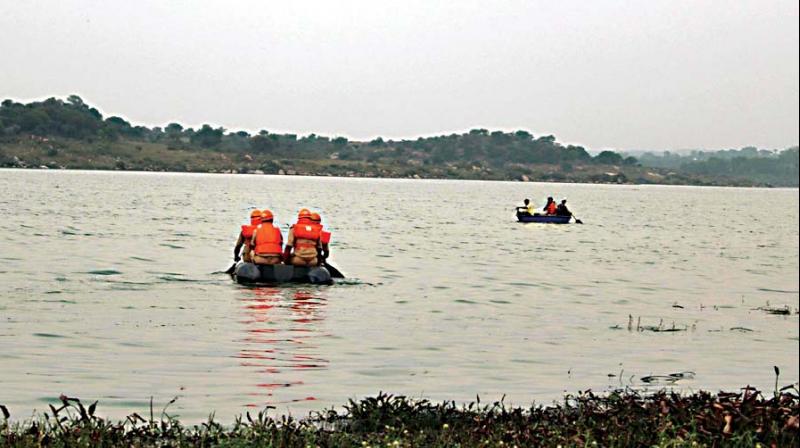Karnataka: No lakes to quench city's thirst

Not too long ago Bengaluru had more than one source of water supply. Besides the river Cauvery, it received water from the Tippagondanahalli and Hessarghatta reservoirs. But in 2010 it lost the last two sources to pollution. With industries and homes in the vicinity of both reservoirs contaminating their water, it became unfit for drinking, leaving Bengaluru entirely dependant on the Cauvery.
Although the Bangalore Water Supply and Sewerage Board (BWSSB) pumps nearly 1400 million litres (MLD) of water to the city from the Cauvery river over a long distance from its Mysuru reservoirs, some pockets of the city remain without regular supply.
Racking their brains to find more sources of water for the city, BWSSB officers finally came up with the obvious : a plan to restore the health of the T.G. Halli and Hessarghatta reservoirs and supply the city an additional 135 MLD from the first and 12 MLD from the second.
Bengalureans looked hopeful as the board laid the foundation stone for treating the water flowing from the Arkavathy river to the Hessarghatta lake through a Natural Biological System in February this year. And the then Bengaluru Development Minister, K.J. George seemed all pumped up at the idea of adding 12 MLD of water to the city’s supply. But looking at the pace of work, it’s anybody’s guess when the water will actually start flowing from taps in people’s homes.
A senior BWSSB official says the idea is to complete the project as soon as possible. “We have divided it into two phases to speed up the work. Under the first phase we plan to supply 135 MLD of water from T.G. Halli and under the second, we want to pump 12 MLD of water from Hessarghatta reservoir. With the Cabinet giving its clearance, we expect to complete phase 1 by 2021 and the second by 2023,” he assures.
Former irrigation secretary and water expert, Captain Raja Rao believes it may not be difficult to restore the T.G. Halli and Hessarghatta reservoirs, but says the major challenge could lie in removing their accumulated silt.
“Removing silt is not only a time consuming process, but is also expensive. A lot of money goes into dredging and transporting the silt,” he explains. In his view, to save time the board should create three or four islands with the silt and build a retaining wall around instead of transporting it.
“The silt can be covered with one metre of good soil to support plant life. And the islands could turn into a tourism attraction and be used for water sports, boating and a lot of other activities,” he says.
Conceding that nearly 16,000 truckloads of silt will have to be removed from the Hessarghatta reservoir alone, the BWSSB officer says the board is aware of what it will take to accomplish this. “ In the recent budget, the state government allotted Rs 340 crore for the rejuvenation of T G Halli. But we have revised the proposal and asked for Rs 66 crore more,” he adds, claiming that the board is on top of things.
If Bellandur lake is frothing, so is Arkavathy
While the government may have the best of intentions in trying to revive the T.G. Halli and Hessarghatta reservoirs to help Bengaluru with its drinking water supply, civic activists point out that industrial effluents continue to be let out into the tributaries of the Arkavathy river which leads to them.
“Industries are supposed to follow the zero discharge policy, which means they cannot let out effluents into the river, but recycle them. The Karnataka State Pollution Control Board is supposed to monitor them to ensure that that they adhere to the rules. But in reality the industries do not care for any policy and continue to pollute the river while the board's officials look the other way,” regrets one city activist, pointing out that if Bellandur lake is frothing, so is the Arkavathy river.
“The lake has made international headlines, but few are talking about Arkavathy, which too is foaming because of the increased pollution in its waters. You can see it in villages like Cholanayakanahalli and Midachayyanapalya,” he says, lamenting that corrupt KSPCB officials don’t care to take action against the polluting industries and put a stop to the contamination of the river.
“If no serious action is taken against the polluting industries along the river, there will be no point in rejuvenating the T.G. Halli and Hessarghatta reservoirs,” he warns.

